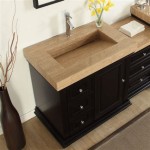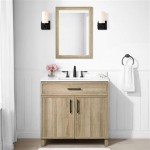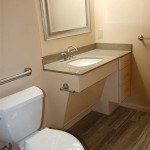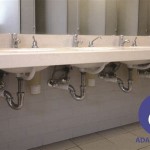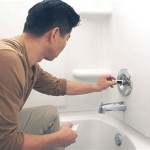Bathroom Mixer Tap Size: A Comprehensive Guide
Selecting the appropriate bathroom mixer tap size is crucial for achieving both aesthetic balance and functional efficiency in a bathroom space. Overlooking this detail can lead to issues ranging from inadequate water pressure to an unbalanced visual appeal. This article provides a detailed exploration of the factors influencing the choice of bathroom mixer tap size, offering a comprehensive guide to ensure optimal selection.
The term "mixer tap" refers to a single tap that combines both hot and cold water, allowing the user to adjust the water temperature to their preference. This design contrasts with traditional setups that involve separate hot and cold water taps. Mixer taps are available in a wide variety of styles and sizes, each suited to different basin designs and plumbing configurations. Understanding the nuances of these variations is paramount to making an informed decision.
Several factors need consideration when determining the appropriate size of a bathroom mixer tap. This includes the size and style of the basin, the intended use of the tap, the water pressure available, and the overall aesthetic desired. A tap that is either too large or too small for the basin can disrupt the bathroom's visual harmony and potentially lead to functional issues such as splashing or difficulty maneuvering within the sink area.
Matching Tap Size to Basin Dimensions
The dimensions of the basin directly influence the appropriate size of the mixer tap. A small basin, such as those found in compact bathrooms or cloakrooms, will typically require a smaller tap. Using an excessively large tap on a small basin can overwhelm the space visually and lead to water splashing over the sides. Conversely, a large, wide basin will necessitate a taller and longer-reaching tap to ensure comfortable access to the water stream.
The concept of “reach” is critical. Reach refers to the horizontal distance from the base of the tap to the point where the water stream exits. A tap with insufficient reach will force the user to lean forward uncomfortably to access the water, while a tap with excessive reach may cause water to splash against the back of the basin. Measure the basin's depth and width carefully to determine the optimal reach for the tap. It's generally recommended that the water stream lands close to the center of the basin, but slightly angled towards the user.
Basin style also plays a role. Countertop basins, which sit above the vanity unit, typically require taller taps, often referred to as "high-rise" or "vessel" taps, to bridge the gap between the countertop and the basin's rim. Inset or undermount basins, which are recessed into the countertop, usually pair well with standard-sized taps. Wall-mounted taps are another option, suitable for various basin styles, but require careful planning during installation to ensure proper alignment and reach.
When choosing a tap for a specific basin, consider the overall design language. A sleek, modern basin may benefit from a minimalist tap with clean lines, while a traditional basin might be enhanced by a more ornate tap with curved spouts and intricate detailing. The material and finish of the tap should also complement the basin's material and finish. For example, a ceramic basin might pair well with a chrome or brushed nickel tap, while a stone basin might be complemented by a matte black or oil-rubbed bronze finish.
The height of the tap is another crucial dimension to consider. The tap should be tall enough to allow for comfortable handwashing and filling containers, but not so tall that it obstructs the user's view or causes unnecessary splashing. Consider the height of any potential items that will be placed in the sink, such as tall water bottles or pitchers, when determining the ideal tap height. If space above the sink is limited, a shorter tap may be necessary.
Impact of Water Pressure on Tap Performance
Water pressure significantly influences the performance of a bathroom mixer tap. Low water pressure can result in a weak and inadequate water flow, regardless of the tap's size. High water pressure, on the other hand, can cause excessive splashing and potentially damage plumbing components if the tap is not designed to handle the pressure.
Before selecting a tap, determine the water pressure in the bathroom. This can be done using a pressure gauge attached to a faucet or by contacting a qualified plumber. Taps are typically rated for specific water pressure ranges, and it's important to choose a tap that is compatible with the existing plumbing system. Many modern taps incorporate flow regulators or aerators to optimize water flow and minimize splashing, regardless of water pressure.
For homes with low water pressure, consider taps specifically designed for low-pressure systems. These taps often feature wider internal diameters to maximize water flow and may incorporate booster pumps to increase pressure. For high-pressure systems, consider taps with pressure-reducing valves to prevent damage and ensure a consistent and comfortable water flow. Some taps also offer adjustable flow rates, allowing the user to customize the water flow according to their preferences and needs.
The size of the water supply pipes also affects water pressure at the tap. Undersized pipes can restrict water flow and reduce pressure. Ensure that the water supply pipes are adequately sized for the tap's requirements and that there are no leaks or obstructions in the plumbing system. Regular maintenance, such as cleaning aerators and checking for leaks, can help maintain optimal water pressure and tap performance.
The type of mixing valve within the tap also matters. Ceramic disc valves are commonly used in modern mixer taps and offer smooth operation and precise temperature control. These valves are generally more durable and reliable than traditional rubber washer valves, and they are less prone to leaks. When selecting a tap, consider the type of valve and ensure that it is of high quality and compatible with the water pressure in the bathroom.
Aesthetic Considerations and Practical Functionality
Beyond the purely functional aspects, the aesthetic of the bathroom mixer tap contributes significantly to the overall design of the bathroom. The size and style of the tap should complement the other fixtures and fittings in the room, creating a cohesive and visually appealing space. Balance is key; a tap that is disproportionate to the basin or clashes with the other elements in the room will detract from the overall aesthetic.
The finish of the tap also plays a crucial role in the bathroom's design. Chrome is a classic and versatile finish that complements a wide range of styles. Brushed nickel offers a more subtle and contemporary look, while matte black provides a bold and modern contrast. Other available finishes include stainless steel, brass, copper, and oil-rubbed bronze. Consider the existing hardware and fixtures in the bathroom when selecting a tap finish to ensure a consistent and harmonious look.
Practical functionality encompasses ease of use and maintenance. A tap with a smooth and ergonomic handle is easier to operate, especially for individuals with limited dexterity. The tap should also be easy to clean and maintain, with a finish that is resistant to water spots and fingerprints. Some taps feature pull-out or swivel spouts, which offer added convenience for tasks such as rinsing the basin or filling containers.
The location of the tap handle is also a practical consideration. Side-mounted handles are a popular choice, offering easy access and control. Top-mounted handles provide a sleek and minimalist look but may require more effort to operate. The handle should be positioned so that it is easily accessible and does not obstruct the user's movement. Sensor taps, which automatically activate when hands are placed beneath the spout, offer a touch-free option that is both hygienic and convenient, particularly in high-traffic bathrooms.
Ultimately, the ideal bathroom mixer tap size represents a balance between functional requirements and aesthetic preferences. Careful consideration of the basin dimensions, water pressure, and overall design of the bathroom is essential for making an informed decision. Consulting with a qualified plumber or bathroom designer can provide valuable insights and ensure that the selected tap is both aesthetically pleasing and functionally optimal.

Grohe Allure 3 Tap Hole Basin Mixer 1 2 Inch S Size Wall Mounted Trim Set Only Chrome Ideal Bathrooms

Eaton Chrome Deck Mounted Bath Shower Mixer Tap Modern Rounded Design Mbt67c Bathroom House

Mayfair Chrome Deck Mounted Swan Neck Bath Shower Mixer Tap Modern Rounded Design Mbt08c Bathroom House

Inart Bathroom Single Lever Hole Basin Mixer Brass High Neck Lon

Single Lever Bathroom Mixer Tap Water Basin Bib Cock Faucet Empolo

Classic Wall Mounted Water Mixer Tap For Bathroom Fittings Size 15 Mm

Oil Rubbed Broe Bathroom Faucet Waterfall Sink Basin Single Handle Bath Lavatory Farmhouse Faucets Antique Black One Hole Lever Spout Mixer Tap Commercial Supply Hose Lead Free Com

Bathroom Taps Buyers Guide Buyer Guides Heatandplumb Com

Sinor M 8301h Bathroom Raised Basin Mixer In Kuala Lumpur Malaysia

Single Handle Bath Mixer Tap Size 40mm Rift Model Brass With Chrome Plated Finish Cofan
Related Posts
